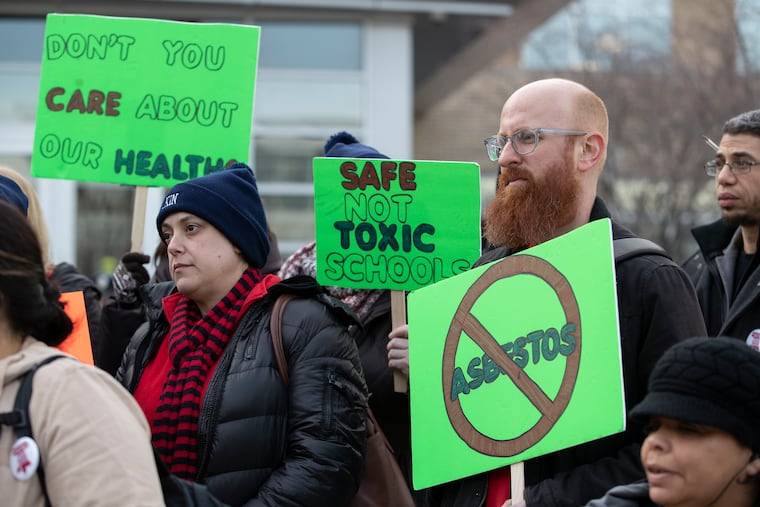Asbestos is a crisis for Philly schools, but also for the city | Editorial
The school year has resembled a whack-a-mole of toxic schools.

A growing population, rising home values, and overall growth has led Philadelphia to a state of relative “civic well-being” as Pew’s “State of the City” report recently put it. The city has changed from a place that people want to flee to a place people want to be.
But that could change — fast. The city’s homicide rate is enough cause for concern, but an environmental crisis in the schools poses a bigger threat, since schools are key to driving people’s decisions to leave or move to a city.
Increased investment and academic improvements have made a difference. But for the past school year, the school district has been coping with a perfect storm of old buildings and years of deficit funding that are erupting into environmental emergencies. A spate of exposed asbestos has led to school closures, as well as fear and panic among teachers, parents, and community members. Last year, a Philadelphia teacher was diagnosed with mesothelioma, a cancer caused by asbestos.
The school year has resembled a whack-a-mole of toxic schools, with an asbestos problem discovered, the problem fixed, only to be followed by yet another school with exposed asbestos or worse: a “fixed“ school determined not fixed after all.
The mere presence of asbestos in schools is not the crisis. Asbestos, a component in the city’s older buildings, isn’t dangerous until it is damaged. The crisis is that the district has been scrambling to deal with one emergency after another, and not equipped to create a clearly communicated plan of attack to assure parents and teachers that the situation is under control.
But this doesn’t just impact parents, teachers, and school children. It impacts the entire city and its future.
The blame for years of deficit funding and the resulting neglect of aging facilities rests with the state. But the city as a whole has a responsibility to address this crisis. Mayor Kenney managed three years ago to wrest control of the city’s schools from the state. But local control is not just a management structure. Local control means the city is ultimately responsible for its schools. The buck stops at City Hall, and that means the mayor should step forward as a loud and galvanizing force and use the weight of the city — including its institutions, its business community, unions, and, yes, its budget — to get on top of this.
Money is critical. Last week, the school board announced it approved $14 million for environmental oversight and abatement. But that’s not nearly enough. Also last week, Gov. Wolf proposed spending $1 billion usually put toward capital projects to deal with asbestos and lead in schools throughout the state — but that money is subject to the approval of the same general assembly who has failed the schools all across the state, not just in Philadelphia.
The bigger fix is instilling a sense of confidence that the district and the city has this problem under control — a complicated, messy problem, to be sure. That has to happen fast. Besides the health and welfare of children and teachers, the growth of this city is at stake.
.